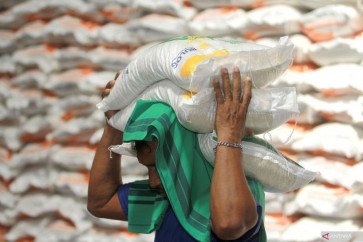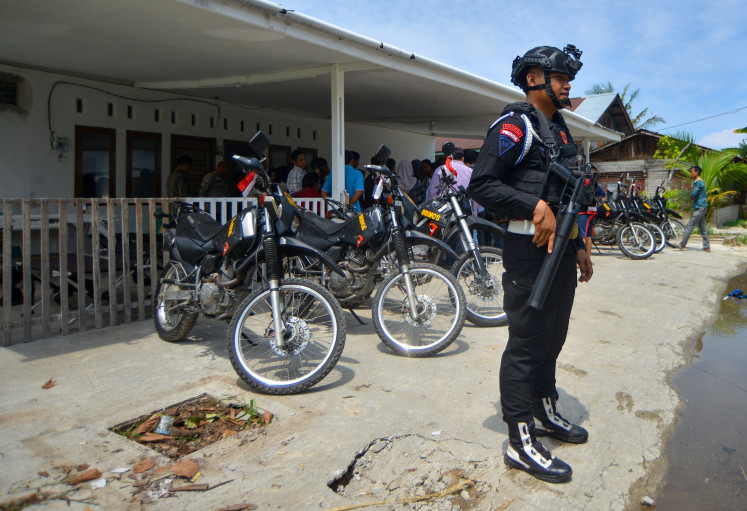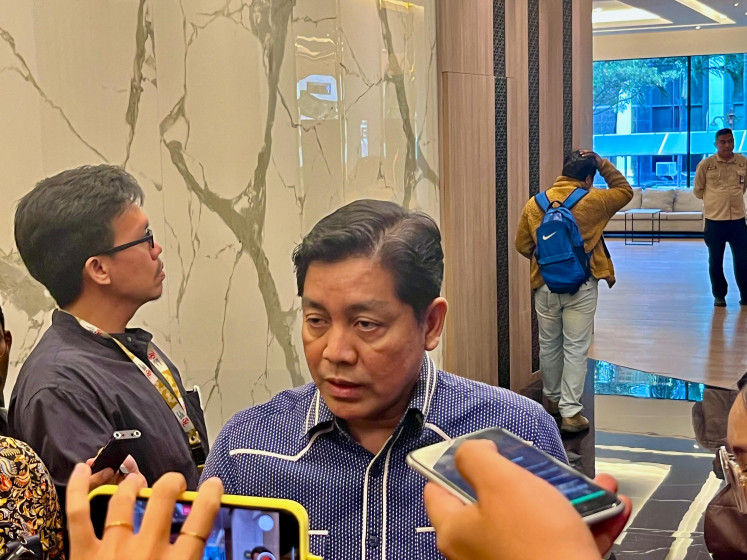Popular Reads
Top Results
Can't find what you're looking for?
View all search resultsPopular Reads
Top Results
Can't find what you're looking for?
View all search resultsBPMigas boasts faster project approvals
The upstream oil and gas regulator, BPMigas, processed and approved more project development and production plans this year thanks to an internal reform program that made the institution less bureaucratic, an official said
Change text size
Gift Premium Articles
to Anyone
T
he upstream oil and gas regulator, BPMigas, processed and approved more project development and production plans this year thanks to an internal reform program that made the institution less bureaucratic, an official said.
Throughout the year, BPMigas approved a total of 41 project plans estimated to add 301.7 million barrels of oil and 4 trillion standard cubic feet of gas to the country’s
reserves.
The projects comprised seven plans of development (POD) for new fields, 13 PODs for existing fields, five long-term PODs and 11 production acceleration projects, or put-on-production (POP) proposals.
“The amount of approved projects this year is much higher than the average of approved projects from 2003 to 2010, which was only 32 projects per year,” spokesperson Gde Pradnyana told reporters in Jakarta on Thursday.
He continued that BPMigas was trying to create a corporate culture that was less bureaucratic to accelerate the process of the development plan’s approval. The agency had been committed to process each approval in 31 working days, but by the end of the year, the average time needed to complete the approval was only 13 days, said Pradnyana.
For POP proposals, the average time needed to complete an approval was 10 working days, faster than the initial target of 21 days.
The agency promised to accelerate all processes pertinent to supporting contractors in ramping up oil and gas productions from existing fields as well as developing new fields such as Jangkrik at the Muara Bakau block in East Kalimantan, which is operated by ENI Indonesia.
With additional contributions from the 41 approved projects, Indonesia’s oil and gas reserves by January 2012 will reach 3.9 billion barrels of oil and 104 trillion standard cubic feet of gas. In January 2011, the country’s reserves were recorded at 4 billion barrels of oil and 104 trillion standard cubic feet of gas.
“The decline is caused by the higher production rate in 2011. In that year, we produced 329.9 million barrels of oil and 3 trillion standard cubic feet of gas,” Gde revealed.
In 2011, Indonesia’s oil and gas production was 2.4 million barrels of oil equivalent per day (boepd), declining from 2.5 million boepd last year. In 2009, the production was 2.3 million boepd.
Critics have blamed the country’s poor investment climate as the main reason for the production decline. The criticisms are not baseless.
According to the Global Petroleum Survey 2011, conducted by the Canadian-based Fraser Institute, Indonesia was ranked 111th out of 135 surveyed countries in terms of investment attractiveness in the oil and gas industry. Last year, the country was ranked 111th from 133 countries.
This year, Indonesia’s rank is the worst among the ASEAN countries, and is even close to Timor Leste, which climbed to 112th position from 118th last year.
The institute says that Indonesia’s oil and gas law is not appealing for investors and poor coordination between the central and regional governments has also caused many delays in oil and gas projects. The institute also highlights rampant corruption in the country as one of the concerns for investors.










